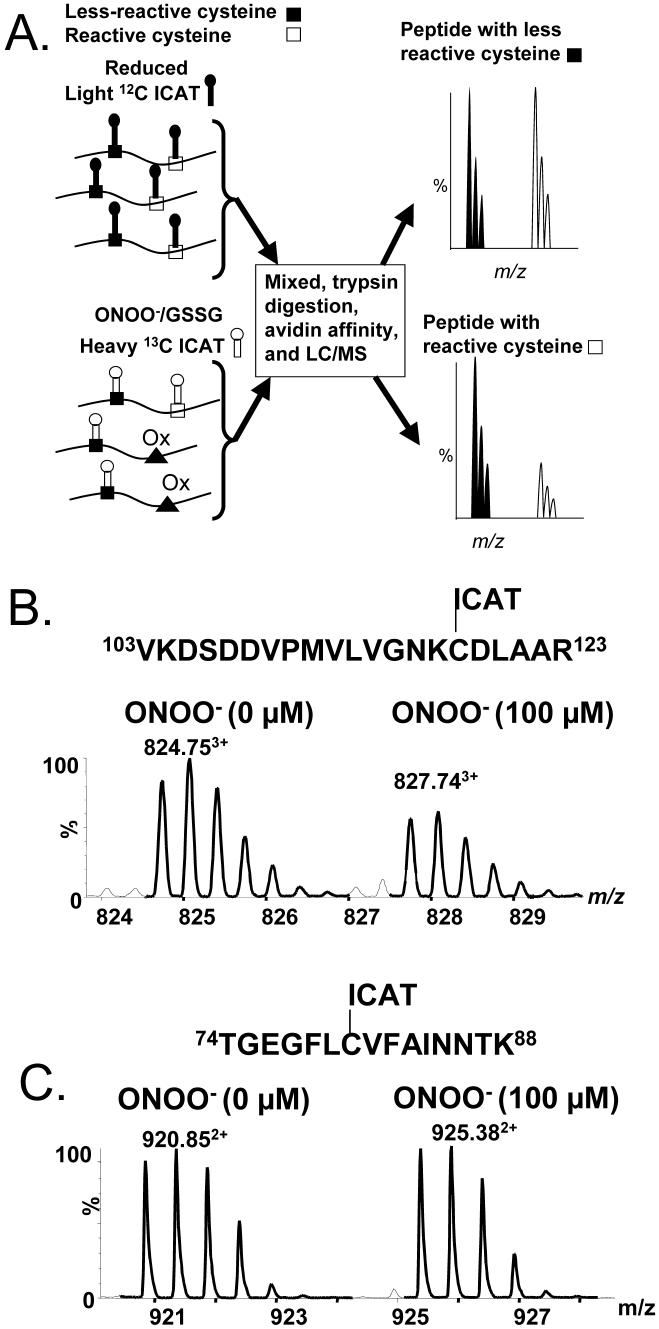7.
Use of isotope coded affinity tags (ICAT) for quantitation of cysteine thiol modifications. A. ICAT approach to quantitatively evaluate reversible and irreversible oxidative post-translational thiol modification. Protein samples with free reactive cysteine thiols (filled box) and less reactive thiols (open box) are exposed to peroxynitrite or GSSG or control buffer before labeling with ICAT reagent. Some of the reactive cysteine thiols are oxidized depending upon the level of the oxidant and oxidized thiols are designated as filled triangles (Ox). Following oxidation, labeling of the free thiols is performed, with light (filled keyhole) and heavy (open keyhole) ICAT tags. ICAT-labeled samples are mixed and digested with trypsin, followed by purification through HPLC cation exchange and avidin affinity cartridges. Affinity-captured peptides are analyzed by LC-MS and MS/MS. The oxidized reactive cysteines are not susceptible to labeling by ICAT reagent, and hence there is a decreased intensity in the mass spectrum peaks corresponding to the heavy-labeled peptide in the mass spectrum of the reactive cysteine-containing peptide (lower spectrum). For less reactive cysteines, the peptides in samples prepared under normal conditions or after oxidant exposure show equivalent signal intensity in the spectrum (upper). From the relative peak intensities of the MS of light and heavy ICAT-labeled peptides, the decrease of in thiol labeling and therefore the degree to which the cysteine is modified can be estimated. Identity of the peptide sequences can be derived from MS/MS analysis of these peptides. In order to evaluate whether the oxidation caused by oxidants such as ONOO- or GSSG is reversible or irreversible, the oxidized protein samples can be treated with reducing agent before labeling with heavy ICAT. From the LC-MS analysis, reversibility of the modifications caused by peroxynitrite or GSSG can be quantified. B. and C. Spectra of ICAT-labeled recombinant p21ras before and after exposure to ONOO- (100 μM). The spectrum in B shows that ONOO- decreases ICAT labeling of the known reactive cysteine-118, whereas no change in labeling occurred for the less reactive cysteine in the peptide shown in C. From reference [48].

